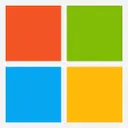Overview
What is SAS Data Management?
A suite of solutions for data connectivity, enhanced transformations and robust governance. Solutions provide a unified view of data with access to data across databases, data warehouses and data lakes. Connects with cloud platforms, on-premises systems and multicloud data sources.
Recent Reviews
Awards
Products that are considered exceptional by their customers based on a variety of criteria win TrustRadius awards. Learn more about the types of TrustRadius awards to make the best purchase decision. More about TrustRadius Awards
Popular Features
- Connect to traditional data sources (10)8.686%
- Connecto to Big Data and NoSQL (9)8.181%
- Integration with data quality tools (9)7.676%
- Simple transformations (8)6.161%
Features
Return to navigation
Product Details
- About
- Tech Details
- FAQs
What is SAS Data Management?
A suite of solutions for data connectivity, enhanced transformations and robust governance. Solutions provide a unified view of data with access to data across databases, data warehouses and data lakes. Connects with cloud platforms, on-premises systems and multicloud data sources.
Included Data Preparation solutions streamline data workflows and execute ELT, supporting data pipelines to ingest, transform and serve high-quality data with a low-code self-service visual designer. And governance solutions help users to ensure regulatory compliance.
SAS Data Management Technical Details
| Operating Systems | Unspecified |
|---|---|
| Mobile Application | No |
Frequently Asked Questions
A suite of solutions for data connectivity, enhanced transformations and robust governance. Solutions provide a unified view of data with access to data across databases, data warehouses and data lakes. Connects with cloud platforms, on-premises systems and multicloud data sources.
Reviewers rate Connect to traditional data sources highest, with a score of 8.6.
The most common users of SAS Data Management are from Enterprises (1,001+ employees).








